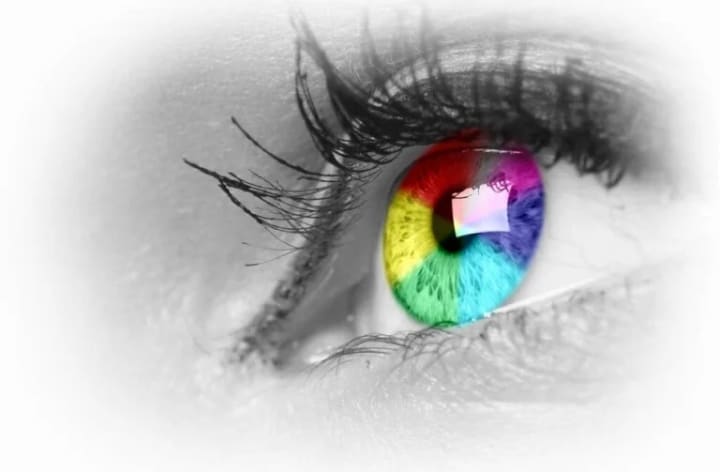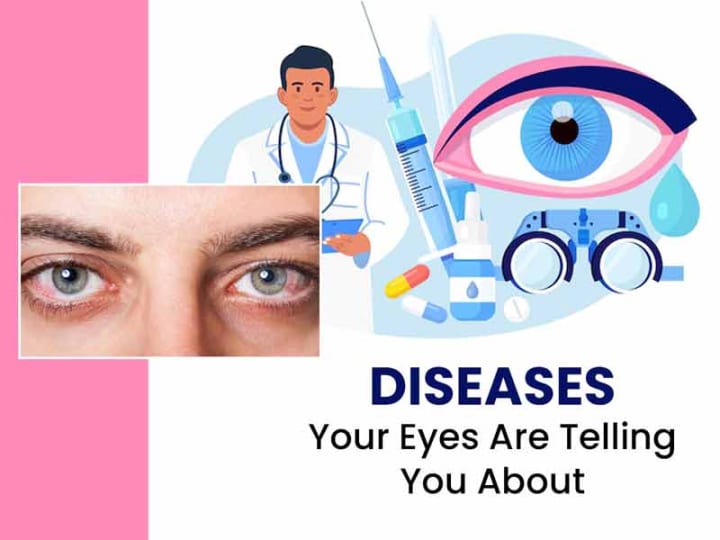
Introduction
The human eye is an amazing organ that allows us to see the world around us. From the vibrant colors of a sunset to the tiny details of a flower, our eyes capture and process an incredible amount of information every day. In this blog post, we'll explore some fascinating facts about our eyes and how they work.
The eye has a complex structure: The eye is made up of several parts that work together to help us see. These include the cornea, iris, lens, retina, and optic nerve. The cornea is the clear, dome-shaped tissue that covers the front of the eye, while the iris is the colored part that controls the amount of light that enters the eye. The lens focuses light onto the retina, which contains cells that convert light into electrical signals that are sent to the brain via the optic nerve.
The eye can distinguish millions of colors: The human eye is capable of distinguishing between millions of different colors. This is due to the presence of specialized cells called cones in the retina. These cones are responsible for detecting different wavelengths of light, which the brain interprets as different colors.

The eye can adjust to different lighting conditions: Our eyes are able to adjust to different lighting conditions thanks to the presence of specialized cells called rods and cones. Rods are responsible for detecting low levels of light, while cones are responsible for detecting bright light and color. When we move from a bright environment to a dimly lit one, our eyes take some time to adjust as the rods become more active.
Our eyes are constantly moving: Even when we're not aware of it, our eyes are constantly moving. This is due to tiny muscles that control the movement of the eyes. These movements help us to maintain a clear image of our surroundings, even when we're moving.

Our eyes can provide clues about our health: Our eyes can provide valuable clues about our overall health. For example, changes in the appearance of the eyes can indicate the presence of certain health conditions such as diabetes or high blood pressure. Regular eye exams can help to detect these changes early, allowing for early intervention and treatment.

There are some common Eye problems every human faces
Refractive errors: These are vision problems caused by the shape of the eye that can cause nearsightedness, farsightedness, or astigmatism.
Precaution: Eyeglasses, contact lenses, or refractive surgery such as LASIK can correct refractive errors.
Cataracts: A cataract is a clouding of the lens in the eye that can cause blurry vision, glare, and difficulty seeing in low light.
Precaution: Surgery is the most effective treatment for cataracts, in which the cloudy lens is removed and replaced with an artificial lens.
Age-related macular degeneration: This is a condition that affects the macula, the part of the eye responsible for central vision, and can cause blurry or distorted vision.
Precaution: There is no cure for age-related macular degeneration, but treatments such as injections of medication into the eye or laser therapy can slow the progression of the disease.
Glaucoma: Glaucoma is a group of eye diseases that damage the optic nerve and can lead to vision loss or blindness.
Precaution: Treatment for glaucoma includes eye drops, oral medications, laser surgery, or traditional surgery.
Dry eye: This is a condition where the eyes do not produce enough tears or the tears evaporate too quickly, causing dryness, burning, and irritation.
Precaution: Artificial tears or lubricating eye drops can help relieve dry eye symptoms. In some cases, prescription eye drops or punctual plugs (tiny silicone or gel inserts that are placed in the tear ducts) may be recommended.
Conjunctivitis: Also known as pink eye, conjunctivitis is an inflammation of the thin, clear layer that covers the white part of the eye and the inside of the eyelids.
Precaution: Treatment for conjunctivitis depends on the cause, but typically involves eye drops or ointments to relieve symptoms and clear up the infection.
Strabismus: Strabismus is a condition where the eyes do not align properly and can cause double vision or the brain to suppress one eye.
Precaution: Treatment for strabismus may include eye patches, eye exercises, glasses, or surgery.
Floaters: These are small specks or spots that appear in a person's field of vision and can be caused by changes in the vitreous fluid in the eye.
Precaution: Most floaters do not require treatment, but if they are severe or interfere with vision, laser therapy may be an option.
Retinal detachment: This is a serious condition where the retina pulls away from the back of the eye and can cause vision loss or blindness.
Precaution: Surgery is required to reattach the retina and prevent vision loss.
Diabetic retinopathy: This is a complication of diabetes that affects the blood vessels in the retina and can cause vision loss.
Precaution: Treatment for diabetic retinopathy may include laser surgery, injections of medication into the eye, or traditional surgery. The best treatment for diabetic retinopathy is to manage blood sugar levels and blood pressure to prevent further damage to the retina.





Comments
There are no comments for this story
Be the first to respond and start the conversation.